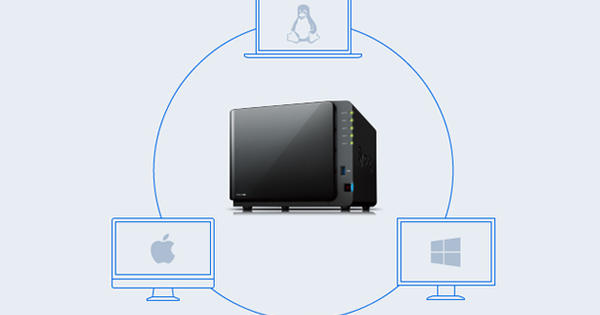One of the most interesting smartphones announced in 2019 is without a doubt the Nokia 9 Pureview. The Nokia 9 is Nokia's top device and is particularly notable for the five cameras, the 'pentacam' on the back.
Nokia 9 PureView
Price from € 599,-Colors Blue
OS Android 9.0 (Android One)
Screen 6 inch OLED (2880 x 1440)
Processor 2.8GHz octa-core (Snapdragon 845)
RAM 6GB
Storage 128GB
Battery 3,320mAh
Camera 12 megapixel pentacam (rear), 20 megapixel (front)
Connectivity 4G (LTE), Bluetooth 5.0, Wi-Fi, GPS, NFC Format 15.5 x 7.5 x 0.8 cm
Weight 172 grams
Other fingerprint scanner under screen, dongle, 3.5 mm headset, IP67
Website www.nokia.com 7 Score 70
- Pros
- Price
- Android One
- Camera
- Negatives
- Camera processing takes too long
- No headphone port
- Fingerprint Scanner
For many smartphone enthusiasts, the heart beats faster with the name Pureview. Nokia broke new ground with its Pureview smartphone cameras, such as the 2012 Nokia PureView 808 and the 2013 Nokia Lumia 1020 (followed by several other Lumia smartphones). Although the camera technology of these smartphones was revolutionary, the smartphones were not a huge sales success. That was more due to the platforms of the smartphones. The first Pureview ran on Symbian, which was already outdated at the time, and the second ran on Windows Phone, which few people were enthusiastic about and lacked the apps to edit and share the beautiful photos. The brand name Pureview was part of the sold contents of Nokia, which came into the hands of Microsoft in 2015. The revived Nokia took over the Pureview name again in 2018 and put the stamp on the new Nokia 9. This means that the expectations for the smartphone are immediately high.
Pure review camera

Five cameras work together on this Nokia 9 Pureview to shoot the ultimate smartphone photo. A so-called Pentacam. The image of these five photos is merged into one ultimate photo. With the data from five photos, there are of course also many options for post-processing, which also makes this Pureview smartphone very interesting for the advanced photographer.
Nokia ingredients
Of course there is more than one interesting camera. Nokia has made a resurrection and it doesn't come out of the blue. Not only are the Nokias attractively priced, it is also one of the only Android manufacturer that fully bets on Android One. With this, the support with Android and security updates is in order, which cannot be said about most other Android manufacturers. A top smartphone with a good camera. That sure sounds good.

But unfortunately Nokia doesn't have everything in order. That becomes clear when you open the box. Here you will find a 3.5 mm headset and a dongle to connect it to the Nokia 9. Smartphone manufacturers, including Nokia, have still not been able to provide a good argument for removing the headphone port. But by providing both a traditional headset and a dongle, you are indirectly admitting that the smartphone is incomplete without the port. The sound quality of the built-in speakers is also remarkably poor.
Another point where the Nokia 9 falls short is the fingerprint scanner. This is located at the front behind the screen. That is a new technique that we have already seen on smartphones such as the Samsung Galaxy S10, OnePlus 6T and Huawei Mate 20 Pro. Although it is a cool technique, my experiences so far have not been so positive. On the Nokia 9, I've had the worst experience yet with the fingerprint scanner behind the screen. The scanner does not work much more often than it does, and is therefore by no means an improvement compared to a physical fingerprint scanner at the bottom or the back. The placement is also awkward: in the middle of the screen. So if your fingerprint is not registered, the device thinks that you press 5 to enter a pin code.
Build quality
The screen is also of excellent quality and with its 6 inches it is not of a particularly large size. Your Pureview photos will come into their own on this screen, which scores well in terms of color reproduction and brightness. Despite the screen being slightly smaller than that of other top smartphones, the device size is about the same. That's because Nokia deliberately chooses not to use screen gimmicks such as a notch or a camera hole in the screen. This gives you an edge above the screen, but all sensors are present for more reliable face unlocking, for example.
The build quality of the Nokia 9 is also fine. Particularly impressive is that Nokia has managed to place the rear cameras in the housing without them protruding. The device feels very solid, but due to its glass housing, it is naturally fingerprint-sensitive and smooth. The Nokia has slipped out of my closet several times, which makes a cover seem necessary.


Nokia 9 with Android One
Working with Android One is a breath of fresh air. No bloatware such as misleading virus scanners and no other unnecessary apps and useless additions that other manufacturers have a hand in. In theory, this also has a positive influence on performance and battery life. These are acceptable: the device works without noticeable delay and can run heavier apps and games just fine, despite the fact that Nokia has made the choice not to equip this smartphone with the latest Snapdragon processor and a lot of RAM. The battery life is about a day, depending on your use of course. I honestly expected more from that. Especially because many new top smartphones are equipped with a larger battery of about 4,000 mAh. The Nokia 9 has 3320 mAh (not 3310, second missed opportunity!).
Pictures of the Nokia 9 Purereview
Of course you buy the Nokia 9 for its camera. So how it performs is perhaps the most important part of this review. And well… There is a lot to say about that. First of all, the technical. The pentacam consists of five sensors: two RGB sensors and three monochrome. A 'Time of flight' sensor, also called a TOF sensor, is able to record the distance to different points. Thanks to all these sensors, the Nokia 9 is excellent at capturing depth. But also more light. This makes a lot possible in the field of depth-of-field photos, but also in varying light conditions. Over- and underexposed areas can be better detected by these sensors. The five sensors have 12 megapixel resolution (in addition to an aperture of f/1.8, 28mm, 1/2.9" sensor size and 1.25µm pixel size). Because the sensors are the same, there is no possibility to zoom without loss of quality, which is possible, for example, with the (triple) double camera (telephoto lens and wide-angle lens) of, for example, the iPhone XS, Galaxy S10+ and Huawei Mate 20.



From left to right: the Nokia 9 PureView has a depth of field like no other, many details are preserved in the dark, when zooming in, photos become a bit grainier.
That provides a whole data of information in a photo. By default, the photos are saved in JPG format, but that already contains quite a bit of information. Such as depth information, so that you can use the buttons later to shift the depth-of-field focus. You can even do that in Google Photos, which is really cool. For advanced photographers, the Nokia 9 is completely drooling with the capabilities of the pentacam. Especially the fact that you can store all this data in one raw file (.dng) offers many possibilities for post-processing in Lightroom or Snapseed.
Processing all this information is difficult for your smartphone. Processing takes a remarkable amount of time and a .dng file is around 40MB. The smartphone does not seem powerful enough to perform processing and storage quickly. The fact that a Snapdragon 845 processor is used instead of the faster Snapdragon 855 does not help, and although 6GB of RAM is fine for a regular smartphone, the Nokia 9 might have used a little more. This is something to keep in mind, because while the Nokia 9 takes really great photos, you don't have them readily available and switching between camera modes takes time. Time that you don't always have as a photographer.
However, the photos are something to write home about. Whatever the lighting conditions. Portrait photos are also very good and detailed: accurate to the split end, the person you are photographing can be placed in front of a blurred background. Or vice versa, if you find the background more interesting than the person or object.
Processing a photo takes a lot of time and a .dng file is around 40MB.Nokia 9 in practice
I really want to like the Nokia 9 Purereview. With a good camera, Android One and a brand with the gun factor, it should too. But I can't. The frustrations of the Nokia 9 are all so unnecessary. When unlocking, I already lose heart, the headphone port is a loss and taking pictures is frustrating. The smartphone simply does not seem powerful enough for the cameras. Switching between camera modes takes unnecessarily long, so you may miss the photo opportunity and processing a photo feels like an eternity - the phone also gets noticeably warmer. Although you can continue shooting photos, it sometimes takes up to half a minute before a photo is fully processed. That is not of this time and very embarrassing if you want to show your beautifully shot photo to someone else. It overshadows the fact that the photos are beautiful and the post-processing options versatile.
If I had to choose a powerful smartphone with a good camera in the same price range right now, I would rather recommend the Samsung Galaxy S9+. The photography experience is then simply better, because without patience you have your photo immediately available. Advanced photographers, who can live with the processing time, however, have a wealth of options for post processing. The depth profiles are versatile and the .dng photos (RAW) offer extremely many post-processing options, for example in Adobe Lightroom. Those who prefer to concentrate on shooting beautiful photos can also be sure that the Nokia 9 succeeds in that.

Conclusion
Unfortunately, the Nokia 9 PureView cannot quite live up to my expectations. Although the device is beautiful and Nokia is an example for other smartphone manufacturers thanks to Android One, the device feels incomplete without a headphone port and the fingerprint scanner behind the screen is below par. The photos and photography options that the Nokia 9 PureView brings make a separate camera superfluous. But the device is not powerful enough to process the photos quickly or switch between camera modes quickly, so you miss photo moments that other smartphones can capture. This makes your photos beautiful, but the photography experience is not optimal.

